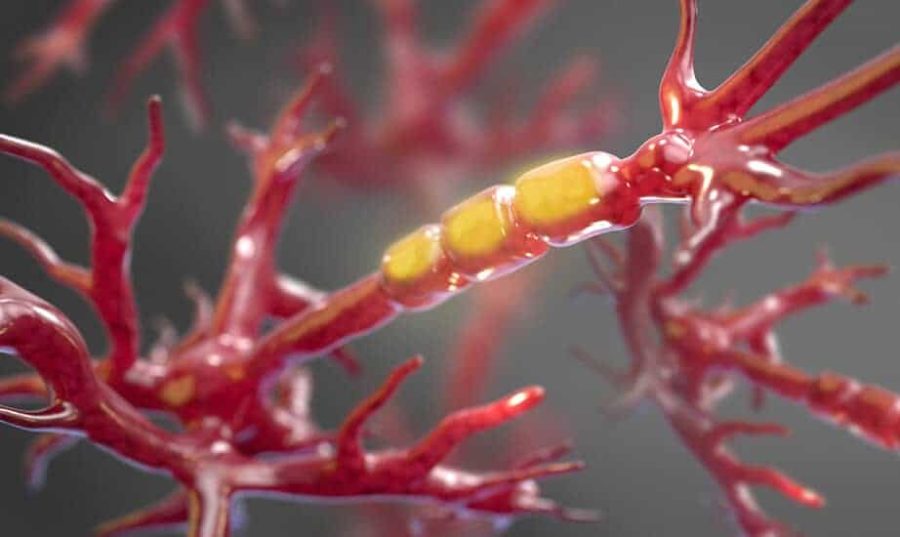Scientists from Harvard Medical School (HMS) have identified a key instigator of nerve cell damage in people with amyotrophic lateral sclerosis, or ALS, a progressive and incurable neurodegenerative disorder.
Researchers say the findings of their study, published Aug. 5 in the journalScience, may lead to new therapies to halt the progression of the uniformly fatal disease that affects more than 30,000 Americans. One such treatment is already under development for testing in humans after the current study showed it stopped nerve cell damage in mice with ALS.
The onset of ALS, also known as Lou Gehrig’s disease, is marked by the gradual degradation and eventual death of neuronal axons, the slender projections on nerve cells that transmit signals from one cell to the next. The HMS study reveals that the aberrant behavior of an enzyme called RIPK1 damages neuronal axons by disrupting the production of myelin, the soft, gel-like substance that envelopes axons to insulate them from injury.
“Our study not only elucidates the mechanism of axonal injury and death but also identifies a possible protective strategy to counter it by inhibiting the activity of RIPK1,” said the study’s senior investigator, Junying Yuan, the Elizabeth D. Hay Professor of Cell Biology at HMS.
The new findings come on the heels of a series of pivotal discoveries Yuan and colleagues made over the last decade, which revealed RIPK1 as a key regulator of inflammation and cell death. But until now, scientists were unaware of its role in axonal demise and ALS. Experiments conducted in mice and in human ALS cells reveal that when RIPK1 is out of control, it can spark axonal damage by setting off a chemical chain reaction that culminates in stripping the protective myelin off axons and triggering axonal degeneration — the hallmark of ALS. RIPK1, the researchers found, inflicts damage by directly attacking the body’s myelin production plants — nerve cells known as oligodendrocytes, which secrete the soft substance, rich in fat and protein, that wraps around axons to support their function and shield them from damage. Building on previous work from Yuan’s lab showing that RIPK1’s activity could be blocked by a chemical called necrostatin-1, the research team tested how ALS cells in lab dishes would respond to the same treatment. Indeed, necrostatin-1 tamed the activity of RIPK1 in cells of mice genetically altered to develop ALS.
In a final set of experiments, the researchers used necrostatin-1 to treat mice with axonal damage and hind leg weakness, a telltale sign of axonal demise similar to the muscle weakness that occurs in the early stages of ALS in humans. Necrostatin-1 not only restored the myelin sheath and stopped axonal damage, but also prevented limb weakness in animals treated with it.
If our reporting has informed or inspired you, please consider making a donation. Every contribution, no matter the size, empowers us to continue delivering accurate, engaging, and trustworthy science and medical news. Independent journalism requires time, effort, and resources—your support ensures we can keep uncovering the stories that matter most to you.
Join us in making knowledge accessible and impactful. Thank you for standing with us!

